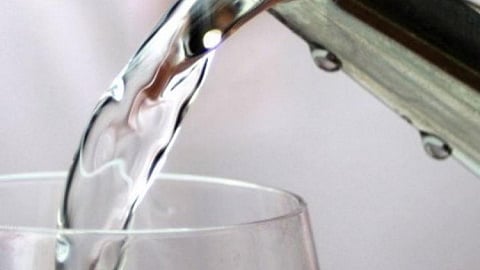
- Topics
- Feature
- Opportunities & Events
- Data
- Hindi Portal
- Topics
- Feature
- Opportunities & Events
- Data
- Hindi Portal

Arghyam has compiled a brief presentation which gives details of the permissible and desirable limits for various parameters in drinking water as per Bureau of Indian Standards (BIS) specifications for potable water (IS -10500: 2012). While the standards were first published in 1983, this is the second revision available on the BIS website.
The standard was adopted by the Bureau of Indian Standards with the following objectives -
They apply to drinking water supplied by different Authorities/ Agencies/ Departments of State Governments and Central Government, wherever applicable in the country. They also apply to water supplied by Non Government or Private Agencies for human consumption in any place of the country.
Information on health impacts of water contaminants in the above presentation has been sourced from the World Health Organisation and the Water Quality Association factsheets.
What is safe drinking water? What is the state of drinking water in India? Click here to know everything about drinking water
The second revision has been undertaken to upgrade the requirements of standard and align with the internationally available specifications on drinking water. For this the BIS has taken into consideration the following publications:
This standard specifies the acceptable limits and the permissible limits in the absence of alternate source. It is recommended that the acceptable limit is to be implemented as values in excess of those mentioned under ‘Acceptable’ render the water not suitable. Such a value may, however, be tolerated in the absence of an alternative source. However, if the value exceeds the limits indicated under ‘permissible limit in the absence of alternate source’ the sources will have to be rejected.
Pesticide residues limits and test methods included in the document are based on consumption pattern, persistence and available manufacturing data. The limits have been specified based on WHO guidelines, wherever available. In cases where WHO guidelines are not available, the standards available from other countries have been examined and incorporated, taking in view the Indian conditions.
In this revision, additional requirements for ammonia, chloramines, barium, molybdenum, silver, sulphide, nickel,polychlorinated biphenyls and trihalomethanes have been incorporated while the requirements for colour, turbidity,total hardness, free residual chlorine, iron, magnesium, mineral oil, boron, cadmium, total arsenic, lead, polynucleararomatic hydrocarbons, pesticides and bacteriological requirements have been modified. Requirements and test methods for virological examination and for cryptosporidium and giardia have also been specified in the revision document.
The Central Water Commission provides a classification of the tolerance limits for inland surface waters for the various classes of water use. As per ISI-IS: 2296-1982, the tolerance limits of parameters are specified as per classified use of water depending on various uses of water. The following classifications have been adopted in India –
You can also download the presentations by Arghyam, edition 2.1 of the standard IS 10500: 2012, IS 10500:1991, IS 10500: 2004, a short write-up on the standard by BIS and the document on "Tolerance and Classification" by CWC below: